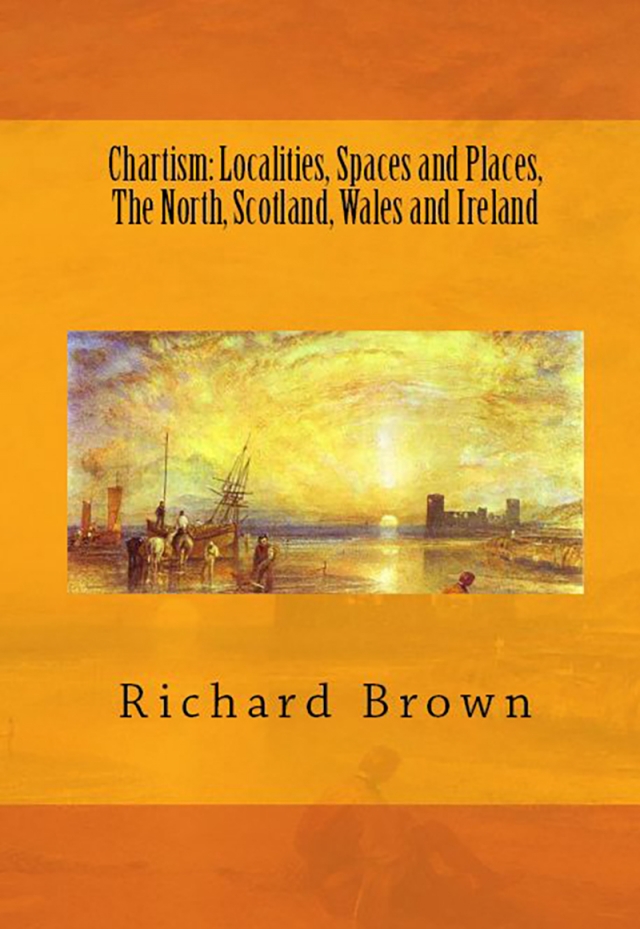Chartism: Localities, Spaces and Places
Book Review

The North, Scotland, Wales and Ireland
Richard Brown, Authoring History, 2015, paperback, 408 pp., ISBN 9781517788988
J.M.W. Turner's romanticised depiction, completed in 1838, of vessels being unloaded in the Dee estuary with the first of Edward I's castles at Flint symbolising the eventual subjugation of medieval Wales by the English crown adorns the cover of the second of Richard Brown's two volumes looking at Chartism from the grassroots. His previous volume considered southern England and the Midlands. This companion volume focuses upon northern England encompassing Yorkshire and the north-east in Chapter 6; Cheshire, Lancashire and the north-west in Chapter 7 and Scotland, Wales, Ireland and the Isle of Man in chapters 8, 9 and 10. The volume is book-ended by a brief introductory preface and a longer synoptic concluding chapter entitled ‘People, places, classes and spaces'. Like its predecessor volume it provides a characteristically illuminating, succinct and thoroughly researched regional and local perspective on this complex but fascinating movement. It identifies clearly the salient features of each geographical area under review, comparing and contrasting the strengths and weaknesses of Chartism within and between each region, and displaying a clarity and subtlety of analysis which will make this volume and its predecessors so valuable to both students and teachers engaging for the first time with one of the most intensively studied episodes in modern British history or those re-engaging with the movement seeking to understand the lively historiographical debates which the subject has generated and which show no signs of abating.
Taking as an example of the author's approach the Wales depicted in Turner's near contemporary view, Brown identifies the distinctive political traditions of the principality, ‘particularly resistance to the hegemony of Anglican agricultural and industrial elites' and suggests that like Scotland there was ‘substantial industrial and urban development that allowed a concentration of radical politics particularly in South and West Wales in the coal-mining and iron-making communities that radiated north from the coast'. However, unlike Scotland ‘there was rebellion in Wales at Newport in November 1839 - perhaps the best known of all Chartist events - and its failure played an important role in how physical force was regarded in the decade that followed'. He concludes that ‘unlike the strikes in 1842, whose relationship to the national movement was tangential other than in mid-August, it was the only major direct action than can be regarded as fully "Chartist" in character'.
Indeed, Brown's discussion of the strikes in his chapters on the north-west and north-east and particularly in Yorkshire is also a model of detailed analysis informed by wide reading of both the voluminous secondary literature and a wide range of primary sources. He has an eye for source extracts which resonate so evocatively with authentic Chartist voices as, for instance, in an extract from the Address of the Female Political Union of Newcastle upon Tyne, published in the Northern Star expressing the frustrations, hopes and fears of north-eastern women backing the movement in February 1839: ‘year after year has passed away and even now our wishes have no prospect of being realised, our husbands are overwrought, our houses half furnished, our families ill-fed and our children uneducated - the fear of want hangs over our heads'. Therefore, ‘Fellow Countrywomen', it continues, ‘we entreat you to join us to help the cause of freedom, justice, honesty and truth, to drive poverty and ignorance from our land and establish happy homes, true religion, righteous government and good laws'. Enlivened by such telling quotations supporting a distinctively fresh analytical narrative this book like its companion volume is compulsive reading.

